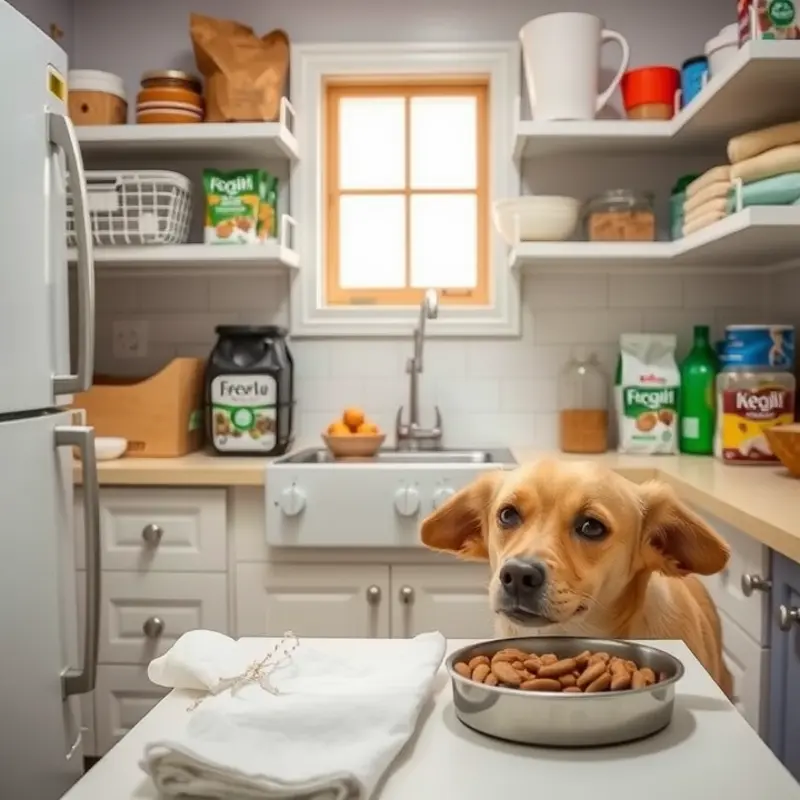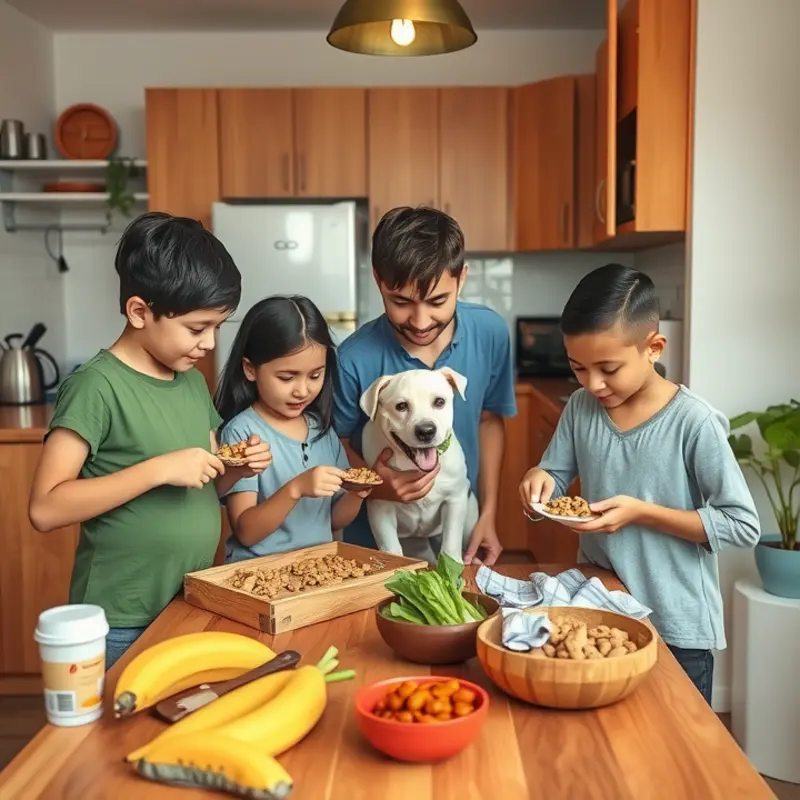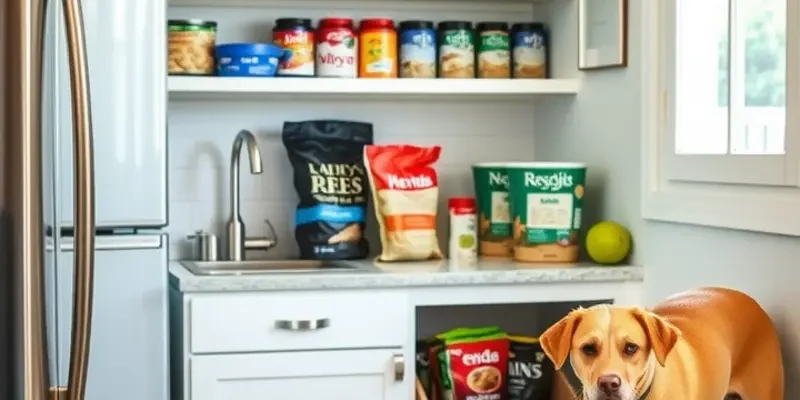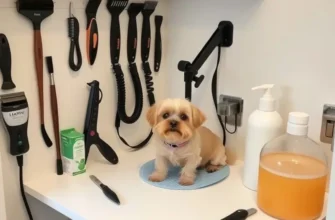Finding the right pet diet that fits into an apartment lifestyle takes thoughtful consideration. For families, couples, and renters striving for a harmonious home, ensuring that pets have nutritious yet easy-to-manage meals can greatly enhance their living experience. In compact spaces, every choice matters—from food selection to storage solutions. With the right pet diet, you can foster a clean, healthy, and safe environment for both pets and children. Let’s explore how to tailor pet diets that work perfectly within apartment limits while keeping your furry friends thriving and satisfied.
Understanding Nutritional Needs and Space Constraints

Living in an apartment doesn’t mean compromising on your pet’s nutrition. Understanding the essential nutrients and adapting to space constraints can create a healthy feeding routine. Proteins are fundamental for energy and muscle development. Their role in cell repair and growth makes them indispensable for every pet’s diet. Opt for food sources rich in high-quality proteins to keep your pet’s muscles strong.
Fats are equally crucial, offering a concentrated source of energy. They should be a priority when choosing pet food, as they contribute to skin and coat health. Look for balanced fat levels in pet food to prevent obesity while ensuring your pet has sufficient energy. Carbohydrates provide sustained energy and fiber, aiding in digestion. While essential, they should be moderated, especially if your pet is less active in a confined space like an apartment.
Vitamins and Minerals support your pet’s overall health and wellbeing. They are vital for immune function, bone health, and preventing deficiencies. A balanced commercial pet food typically covers these needs, but always check the nutritional information.
When choosing the right food, focus on high-quality, nutrient-dense options, either dry or wet. Portion-controlled packets can minimize waste and help maintain a clean feeding area in smaller living spaces.
Storage can be an issue in a compact apartment, but resources like airtight containers are invaluable. They keep food fresh and pest-free. Dedicate a specific section of your pantry to pet food to ensure organization like apartment organization baskets. These practical solutions save valuable space and improve accessibility.
Establishing a feeding schedule that suits your lifestyle is crucial. Consistent feeding times promote discipline in your pet and aid in maintaining cleanliness. This regularity can prevent behavioral issues, as pets thrive with structure and routine. Choose feeding times that align with your daily activities, facilitating a harmonious environment between all household members. A routine can also simplify integrating feeding into busy mornings or unwinding evenings.
By understanding these nutritional needs and considering your living situation, you can ensure that your pet remains healthy and happy. A well-planned routine aligns with apartment life, making nutritious feeding both feasible and sustainable.
Creating a Family-Friendly Feeding Routine

Cooking for pets and ensuring feeding practices fit your family’s lifestyle can streamline daily routines. In apartments where space is limited, creating a harmonious schedule is key, especially if children are in the mix.
Involve the Kids: Including children in pet care teaches them responsibility and empathy. Create a colorful chart that assigns feeding tasks, enabling kids to take on age-appropriate responsibilities. For instance, younger children can refill water bowls while older ones measure out food.
Scheduled Meal Times: Synchronize pet mealtimes with family meals to foster a routine everyone can follow. A consistent schedule helps your pet anticipate their meals and reduces anxiety. By tying these to your established routines, such as breakfast and dinner, pets can seamlessly fit into the family’s timeframes.
Pet-Proof Footprint: Designate a feeding area that is distant from high-traffic locations to minimize noise and distractions during meals. This prevents accidents in areas where toddlers might play or where clutter could accumulate. Using a non-slip mat under feeding dishes can help contain messes and prevent spills.
Healthy Treats: Opt for snacks that are both nutritious and low in calories. This approach is not only beneficial for your pet’s health but also contributes to their training and happiness. Homemade treats can be crafted from pet-safe ingredients, providing peace of mind about their diet.
Monitoring Health: Keep a keen eye on your pet’s weight and overall well-being to ensure their diet is nutritionally adequate. Regular vet visits are invaluable in crafting a diet plan tailored to your pet’s specific needs, thereby maintaining their optimal health.
Cleanup Practices: Prompt cleaning of feeding spaces deters pests and maintains a sanitary home environment, which is especially vital in apartments where cleanliness is crucial. Wipe down the feeding area and wash bowls regularly to prevent any buildup of germs or food remnants.
These strategies can weave pet feeding seamlessly into family life, benefiting both the pet and the household. For more tips on organizing apartment spaces for pets, explore apartment organization ideas, which can also offer innovative ways to manage your living space more effectively. Check out this guide on apartment organization and baskets to enhance overall home management and pet care integration.
Final words
Creating an apartment-friendly pet diet doesn’t require sacrificing health or convenience. By selecting the right foods, organizing storage, and establishing a family-friendly feeding routine, you can cultivate a nurturing environment for both pets and children. Remember, a happy pet contributes to a happy home, so prioritize their well-being while managing your space effectively. With these tips, you’re set to flourish in your pet parenting journey.









